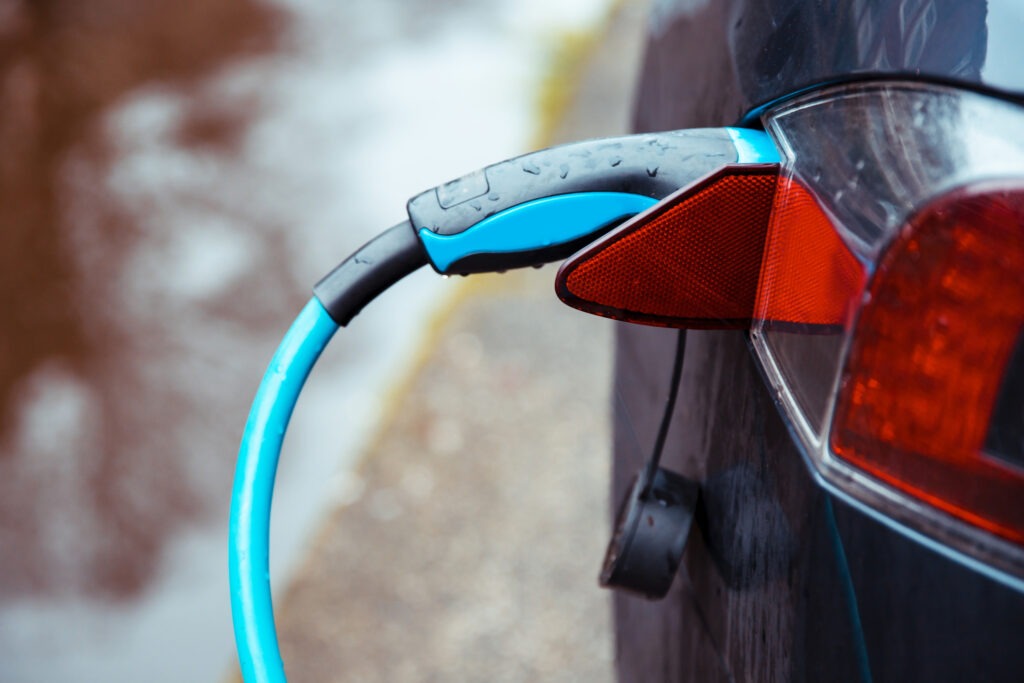Soaring hybrid growth continues in France, Italy and Spain
08 August 2024

Hybrids enjoyed continued growth and popularity across France, Italy and Spain in July. Autovista24 editor Tom Geggus considers the success of the powertrain and its influence on these major European new-car markets.
Hybrids, including full (HEV) and mild (MHEV) variants, enjoyed double-digit registration growth in France, Italy and Spain last month. This contrasted strongly with the overall new-car market trends recorded in these three countries.
With 126,036 registrations, deliveries in France fell by 2.3% year on year. Growth slowed in Italy, as 124,806 units took to the roads, up 4.7%. Meanwhile, Spain’s new-car market grew by 3.4%, with 83,979 deliveries.
A downward trend in France?
A 2.3% year-on-year decline appears manageable at first glance for the French new-car market. However, there are several important factors to consider.
Firstly, July 2024 had 23 working days, three more than in July 2023, as revealed by the PFA. This means there was not enough demand to make use of the additional sales time.
Secondly, the fall in July marks the third consecutive month of decline for the country. June saw a drop of 4.8% while registrations dipped by 2.9% in May. Figures were also negative in March, down by 1.5%.
This downward trend threatens the fragile growth enjoyed by the country’s new-car market. Between January and July this year, the country recorded a total of 1,040,923 deliveries, up by 2.2% compared to the same period in 2023.
Hybrids save overall market
Another major influencing factor in July was the varying performance of different powertrains. With the PFA providing separate performance figures for HEVs and MHEVs, the success of these different technologies becomes clearer. These two stand in clear contrast to the descent of other powertrains.
According to Autovista24 powertrain calculations, MHEVs recorded the greatest growth last month, up 52.7% year on year. With 20,689 units registered, the technology claimed 16.4% of the market, up 5.9 percentage points (pp) from July 2023. MHEVs also posted the best growth in the year to date, with registrations up 43.9% from the same period one year ago.
HEVs were not far behind, with 27,756 deliveries up 43.6% from a year ago. The technology captured the second-largest market share of any powertrain at 22%. This was a significant improvement on its 15% share from July 2023.
Full hybrids also posted a strong volume increase in the first seven months of the year, up 34.3%. From January to July, HEVs made up 18.1% of the market, a marked improvement of 4.3pp year on year.
A shrinking lead
At 29.7%, petrol continued to hold a leading share of the market. However, this was a drop of 7.8pp from one year ago. The powertrain saw registrations fall by 22.6% last month to 37,449 units as attention continues to turn towards electrified technology.
This negative trend is still apparent in the year to date, as petrol volumes decreased by 14.3%. Its market share slumped 6.1pp to 31.8%.
Diesel managed to capture 7.5% of the French new-car market in July, down 2.7pp. Deliveries dropped by 23.9% to 9,505 units. In the first seven months of 2024, registrations were down 23%, and its market share fell by 2.5pp to 7.9%.
Combining diesel and petrol figures, the internal-combustion engine (ICE) market slumped 22.9% in July. This caused its market share to decline by 9.9pp to 37.3%. In the year to date, ICE volumes were down 16.2%, resulting in a 39.7% hold of the market. This was down 8.7pp on its share during the same period of 2023.
The worst performance in July was recorded by plug-in hybrids (PHEVs). The powertrain posted a 30.7% fall in registrations. 9,174 units took to the roads, making up 7.3% of the market, down 3pp on July 2023.
Battery-electric vehicles (BEVs) were able to record growth, up 1% with 17,032 deliveries. This equated to a market share of 13.5%, up 0.4pp. Its year-to-date comparison was more pronounced, with a 13.3% rise in registrations. BEVs captured 16.9% of the market, an increase of 1.7pp.
This meant that the electric vehicle (EV) market, combining BEV and PHEV volumes, declined 12.9% in July. This decreased its year-to-date growth, which sat at 5%. In terms of market share, the technology slumped 2.5pp in July to 20.8% while in the year to date, the EV hold was up 0.7pp to 24.8%.
Italy’s eco-bonus effects
Italy’s new-car market saw growth slow to 4.7% in July with 124,806 units registered, the latest data from ANFIA revealed. This followed an exceptional June when registrations rose by 15.1%.
‘The good result in June, largely determined by the incentives of the new eco-bonus for zero and low-emission vehicles, was difficult to replicate,’ said Roberto Vavassori, president of ANFIA.
Referencing MIMIT data, he highlighted the impact of the incentives. Between early and late June, the scheme collected over 25,000 reservations for vehicles in the 0-20g/km CO2 emissions range. This translated to roughly 13,000 BEV registrations and exhausted the funds allocated to this category within a few hours.
Sliding shares
So while BEVs claimed a market share of 8.3% in June, this slid backwards to 3.4% in July. The month saw registrations increase by 4.2% year on year, bringing growth in the year to date to 6.6%. From January to July, the technology’s share sat at 3.9%.
PHEV deliveries fell by 8.4% last month, translating to a market share of 3.8%. Between January and July, PHEV registrations fell by 23.9% year on year and accounted for 3.3% of the new-car market.
This pushed EV deliveries into decline in July, down 2.9%. Plug-ins captured a 7.2% share in the month, down 0.6pp year on year. In the first seven months of 2024, EV registrations were down 10% and have suffered a 1.2pp drop in market share to 7.2%.
Combining HEV and MHEV figures, hybrid registrations increased by 17.4% last month. This resulted in a market-leading share of 39.9%. This popularity was reflected in the year-to-date total, with deliveries increasing 15.8%, while accounting for 38.9% of registrations.
Petrol-powered models came second in July with a market share of 28.7%, down from its year-to-date share of 30.3%. The powertrain recorded year-on-year growth of 3.7% in the month and 12.9% in the first seven months of the year.
Diesel was the third most popular powertrain last month, with a market share of 12.8%. However, deliveries were down by 26.4% compared to July 2023. Between January and July, diesel deliveries declined by 21%, accounting for 14.3% of the new-car market.
Question of recovery for Spain
Up by 3.4% year on year, Spain recorded 83,979 new-car registrations, according to ANFAC. This is below the 100,000 unit mark, a figure often recorded before the COVID-19 pandemic. However, improving sales to private buyers has meant an overall improvement so far in 2024.
In the first seven months of the year, registrations reached 619,224 units. This was up 5.6% compared with the same period in 2023. However, this figure is down 23.4% on the first seven months of 2019.
‘Recovering the pre-pandemic market figures is not only a question of economics but a step closer to the required emissions reduction targets,’ said Félix García, ANFAC's director of communications and marketing. ‘The entry of new vehicles will help rejuvenate a fleet that is already 14.2 years old.’
‘The extension of the MOVES until the end of the year must serve as an important stimulus for buyers and ensure that the entry of sustainable vehicles is in line with the achievement of the established and required objectives,’ he added.
Not the expected result
‘The continuation of the MOVES Plan was much-needed news, but at the moment it has not had the expected result,’ José López-Tafall, director general of ANFAC.
‘In the last month, the EV market has fallen by 4%. A figure that has caused the BEV and PHEV market to remain stagnant at 10% of the market share and that could have fallen much more without the announcement of the MOVES until the end of the year,’ López-Tafall added.
All-electric vehicles managed an increase of 12.4%, with 3,827 units delivered in July. This pushed the technology’s market share to 4.6%. Meanwhile, PHEV registrations slowed by 14.7%, with 4,415 deliveries. This meant the powertrain accounted for 5.3% of the market.
Combining the two technologies, EVs took a 10.4% share in the first seven months of the year, with 64,127 units. In comparison, hybrids (HEVs and MHEVs) made up the vast majority of Spain’s new-car market at 41.1%. This was followed by petrol with 35.9% and diesel with 10.2%.



